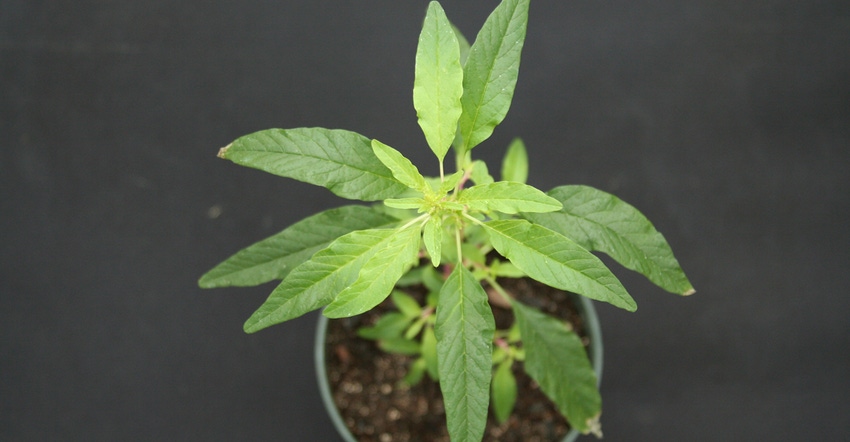
All plants of Weed A are resistant to Chemical 1. Half are also resistant to Chemical 2. Some plants are resistant to both chemicals, and others are only resistant to one. Nearly all plants of Weed B are resistant to Chemical 2, and 75% of them are resistant to Chemical 3. Have your eyes glassed over yet?
Bill Johnson, Purdue University Extension weed control specialist, says that while keeping track of the resistance status of specific weeds to certain chemicals can be confusing, it’s important. Use that information to guide you in preparing herbicide combinations with a better chance of success against key weeds. It may help explain why herbicides used successfully in the past haven’t been as effective lately.
Weed resistance isn’t static, Johnson says. Weed scientists keep up by evaluating plants that didn’t die when the producer thought they should. Samples are sent to Purdue so weed control specialists can determine how weed resistance may be evolving within a species.
Here is the current resistance status as classified by weed scientists for four key weeds in Indiana.
• Marestail. Nearly all marestail plants are resistant to glyphosate, Johnson says. About 50% are resistant to ALS chemistry. ALS inhibitors are classified as Group 2 in the site-of-action chart.
This class includes Classic and FirstRate. They are two different herbicides, but they target the same site of action.
“Some plants are resistant to Classic, but not FirstRate, and vice versa,” Johnson says. “Suppose you have applied FirstRate until now and control has slipped. You might be able to switch to Classic and get by for a year or two. However, if you have resistance to FirstRate and Classic, neither will work.”
More problems are cropping up with marestail control with 2,4-D, Johnson adds. Weed scientists haven’t classified marestail as resistant to 2,4-D, but they’re watching it closely.
• Waterhemp. Assume all waterhemp plants are resistant to ALS chemistry, Johnson says. About two-thirds of the population is resistant to glyphosate. About 20% of the population is now considered resistant to PPO chemistry. PPOs include Flexstar and Cobra. Some sources have reported waterhemp resistance to three other classes of herbicides.
Various combinations are possible. For example, where you haven’t applied glyphosate in non-GMO soybeans, plants resistant to both ALS and PPO chemistries would be likely since those chemistries are used widely with non-GMO soybeans.
• Palmer amaranth. All Palmer amaranth plants are considered resistant to ALS chemistry, Johnson says. Almost all are also resistant to glyphosate. Currently, based on samples sent to Purdue, about 5% is resistant to PPO inhibitors.
“We saw a big surge of Palmer amaranth here in 2012,” Johnson notes. “It hasn’t been spreading much since then. It doesn’t appear to like wet springs, but it’s definitely still a threat.”
• Giant ragweed. Over 50% of giant ragweed plants are resistant to glyphosate, Johnson observes. About 50% are also resistant to ALS chemistry. Translated, some are resistant to one or the other, and some are resistant to both chemistries. PPO resistance hasn’t been documented in giant ragweed so far.
About the Author(s)
You May Also Like




